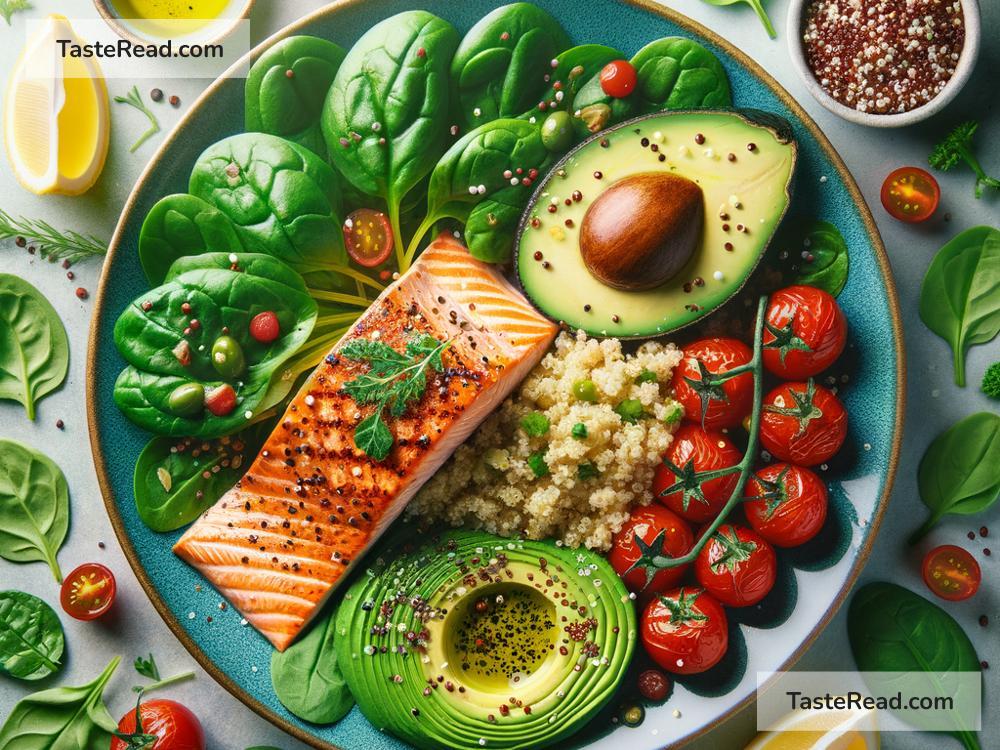Foods That Enhance Myocardial Function
Your heart is remarkable. It works tirelessly, pumping blood throughout your body to deliver oxygen and nutrients while removing waste products. At the center of this life-sustaining process is your myocardium, the muscle tissue of your heart. Keeping this muscle strong and healthy is essential for your overall well-being and longevity. Fortunately, the food you eat can play a big role in helping your heart function at its best. In this blog post, we’ll explore foods that enhance myocardial function in simple, relatable terms.
Why Heart Health Matters
Before diving into specific heart-healthy foods, let’s briefly touch on why maintaining good myocardial function is so crucial. The myocardium, like any other muscle, requires proper nourishment and care to perform optimally. Poor dietary choices over time can lead to cardiovascular issues such as hypertension (high blood pressure), atherosclerosis (clogged arteries), or even heart failure.
Eating foods that promote heart health helps maintain strong heart muscles, ensures smooth blood flow, and reduces the risk of heart disease. What you eat really matters—not just in terms of calories or weight control, but also in terms of supporting heart function at a cellular level.
Top Foods for a Healthier Heart
Let’s break down the best foods for enhancing myocardial function and keeping your heart happy.
1. Fatty Fish
Fatty fish like salmon, mackerel, sardines, and tuna are rich in omega-3 fatty acids, which are essential for heart health. Omega-3s can help reduce inflammation, lower triglyceride levels, and improve blood circulation. These healthy fats also support the electrical signals in your heart, making sure it beats properly.
How to eat it: Include fatty fish in your diet at least twice a week. Grilled salmon or baked mackerel make a delicious addition to your meal plan.
2. Leafy Green Vegetables
Spinach, kale, swiss chard, and other leafy greens are packed with vitamins, antioxidants, and minerals like potassium and magnesium. These nutrients help blood vessels relax and improve blood flow, easing the stress on your myocardium. Additionally, the fiber in greens helps lower bad cholesterol levels, which can harm your heart.
How to eat it: Toss them into salads, stir-fries, or smoothies, or sauté them lightly with olive oil for a simple side dish.
3. Whole Grains
Whole grains like oats, quinoa, brown rice, and whole-grain bread are excellent sources of fiber. Fiber helps reduce bad cholesterol (LDL) and supports healthy blood pressure levels by improving arterial function. Whole grains also provide steady energy for your heart by releasing glucose slowly into your bloodstream.
How to eat it: Swap white rice for brown rice, and opt for whole-grain bread or pasta instead of refined versions. Overnight oats with fresh fruit are a great breakfast option.
4. Nuts and Seeds
Walnuts, almonds, chia seeds, flaxseeds, and sunflower seeds are rich in heart-friendly nutrients such as omega-3 fatty acids, vitamin E, and magnesium. These foods help lower inflammation and improve the elasticity of blood vessels, allowing your myocardium to pump blood efficiently.
How to eat it: Snack on a handful of almonds, sprinkle chia seeds into your yogurt, or add flaxseed powder to smoothies or baked goods.
5. Berries
Berries such as blueberries, strawberries, raspberries, and blackberries are loaded with antioxidants, especially anthocyanins, which give them their vibrant colors. These antioxidants help reduce oxidative stress and inflammation, both of which can damage the myocardium over time.
How to eat it: Add fresh berries to cereal, blend them into smoothies, or enjoy them as a light dessert.
6. Avocados
Avocados are a powerhouse of heart-friendly fats—specifically, monounsaturated fats that help lower bad cholesterol while boosting good cholesterol (HDL). They also contain potassium, a mineral that helps regulate blood pressure and maintain a steady heartbeat.
How to eat it: Spread mashed avocado on whole-grain toast, dice it into salads, or whip up some homemade guacamole.
7. Dark Chocolate
Good news for chocolate lovers: high-quality dark chocolate (at least 70% cocoa) contains flavonoids that help improve circulation and boost heart function. Just remember to enjoy it in moderation, as it can still be high in calories and sugar.
How to eat it: Break off a small square or two for dessert, or pair dark chocolate with almonds for an indulgent yet nutritious snack.
8. Legumes
Beans, lentils, chickpeas, and peas are full of plant-based protein, fiber, and important minerals like potassium and folate. These nutrients help stabilize blood sugar levels, reduce cholesterol, and lower blood pressure.
How to eat it: Add lentils to your soups, toss chickpeas into your salads, or try black beans in a homemade veggie burger.
9. Olive Oil
Extra virgin olive oil is a staple in Mediterranean diets and is well-known for its heart-health benefits. It’s rich in monounsaturated fats and antioxidants that reduce inflammation and improve myocardial function.
How to eat it: Use olive oil as a base for salad dressings, drizzle it on roasted vegetables, or substitute it for butter in cooking.
Final Thoughts: A Heart-Healthy Lifestyle
Food alone isn’t the answer to enhanced myocardial function—you also need to pair it with other healthy lifestyle practices. Regular exercise, stress management, adequate sleep, and avoiding smoking are all key factors in keeping your heart strong. That said, adopting a balanced diet rich in the foods listed above is a step in the right direction.
Your heart works hard for you every second of every day. Support it by nourishing it with the right foods! Start small by adding a handful of berries to your breakfast or switching to whole-grain bread. Every bite you take has the power to feed your heart—and your future.


